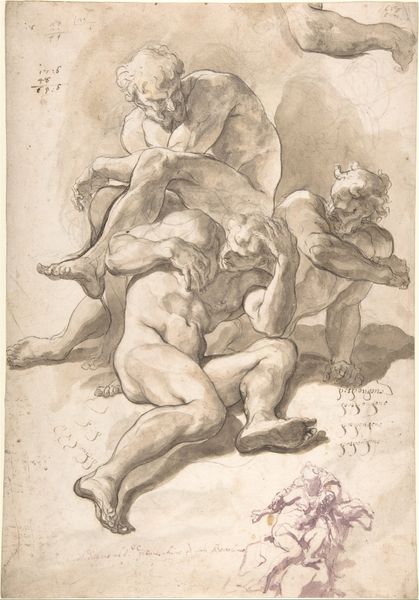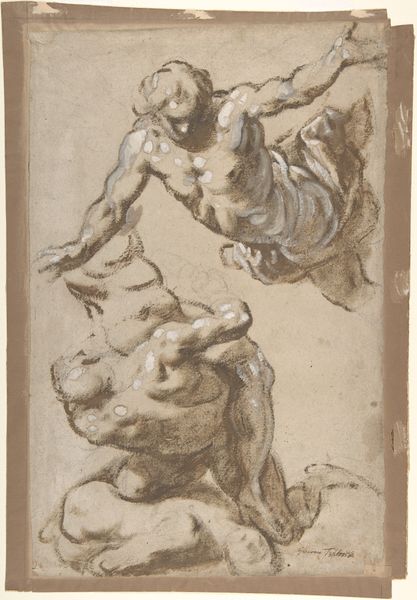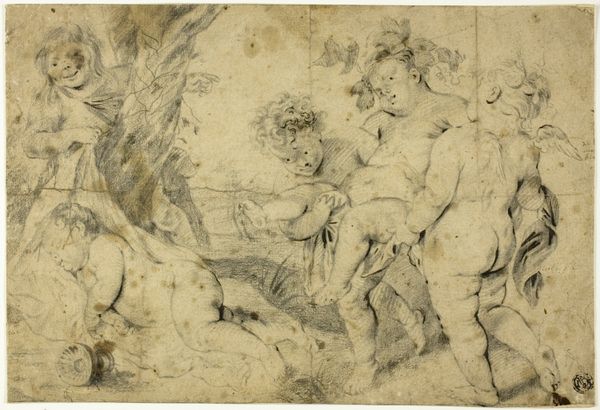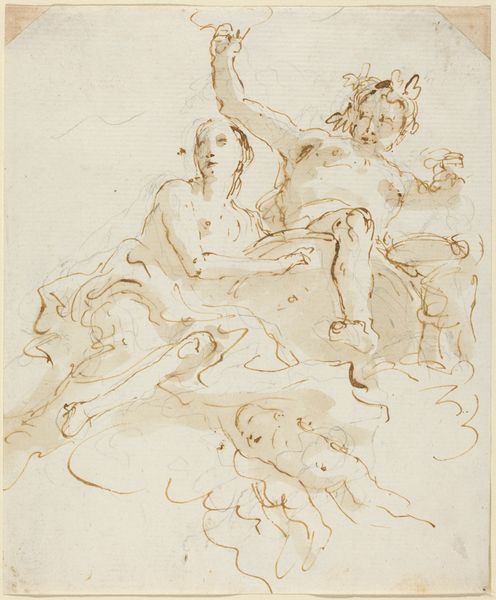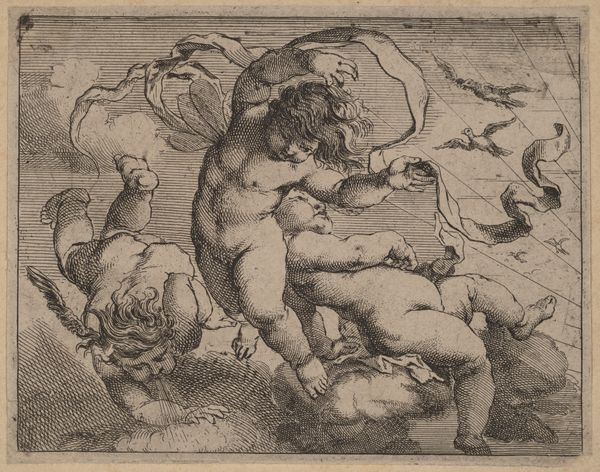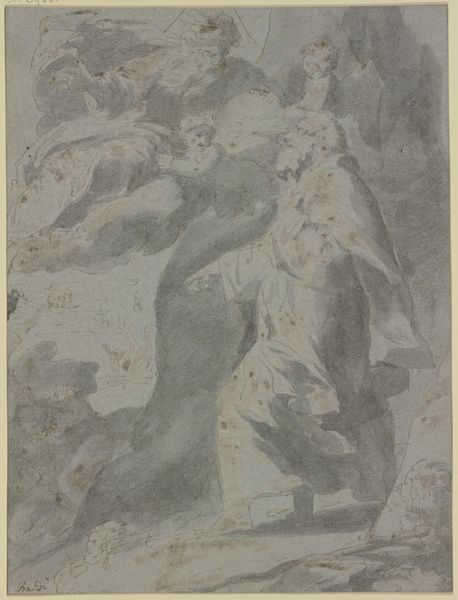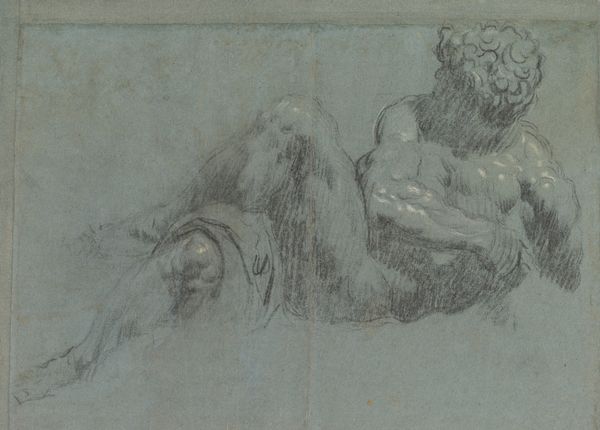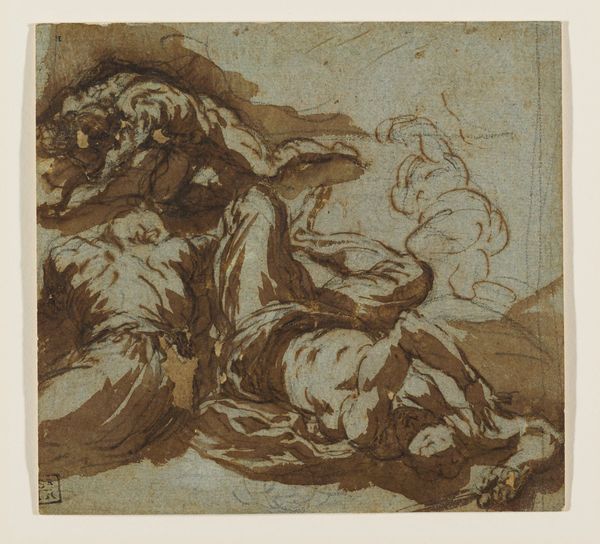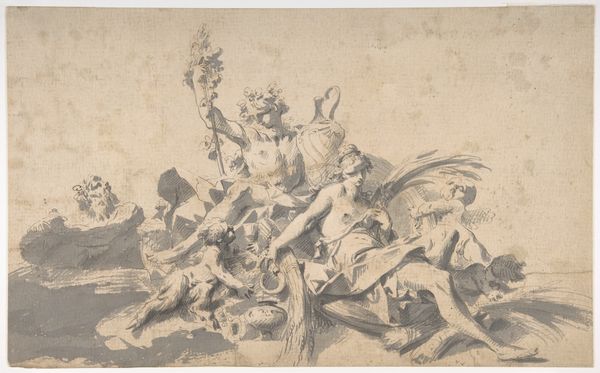
Seated satyr, with enlarged head of same (recto); head of a woman (verso) 1527 - 1596
0:00
0:00
drawing, charcoal
#
drawing
#
charcoal drawing
#
figuration
#
11_renaissance
#
charcoal
#
italian-renaissance
#
nude
Dimensions: 9 1/2 x 12 1/4in. (24.1 x 31.1cm)
Copyright: Public Domain
Pellegrino Tibaldi rendered this drawing of a seated satyr, with ink and wash, in sixteenth century Italy. Satyrs from classical mythology were often used during the Italian Renaissance to represent the baser instincts of humanity. Tibaldi was a mannerist artist and architect, a style that exaggerated proportion, posture, and expression, to imbue a sense of drama and tension. His work occurred in the shadow of Michelangelo. The use of mythological subject matter was typical of the period, when artists looked to classical antiquity for inspiration and legitimation. Artists in institutions such as the art academy were encouraged to study classical art and were often commissioned to produce works that reflected its values. Tibaldi himself completed numerous frescos depicting classical scenes. Drawings such as this one offer art historians insight into the artist's process, what interested them, and what sources they may have been consulting. They remind us that art's meaning is contingent on its social and institutional context.
Comments
No comments
Be the first to comment and join the conversation on the ultimate creative platform.
